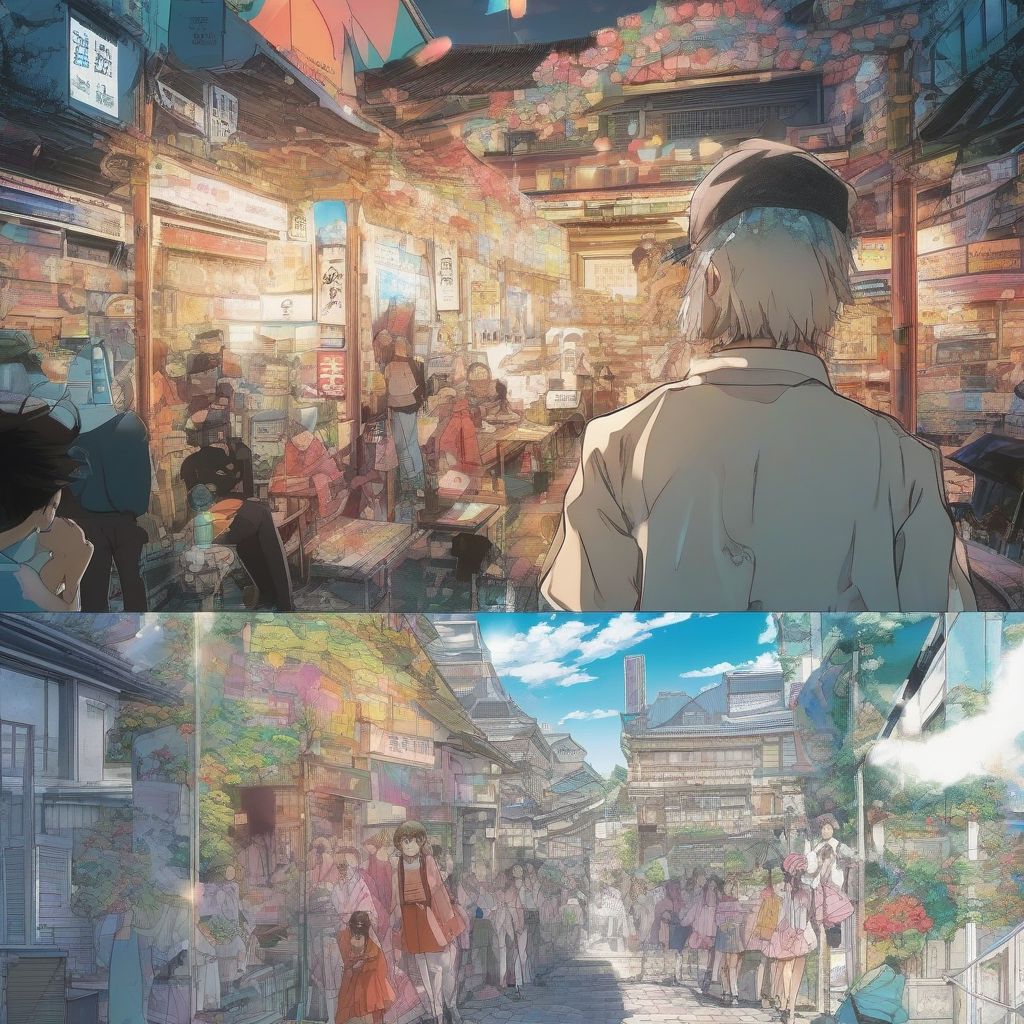Have you ever watched an anime and felt like something was missing? Or perhaps you dove into the manga after finishing an anime, only to discover a whole new world of content? The relationship between manga and anime is a complex one, full of passionate debates and differing opinions. As someone who loves both mediums, I understand the urge to compare and contrast! This article will equip you with a toolkit to analyze the fascinating relationship between manga and anime adaptations.
Key Differences to Consider
Before we jump into the analysis, let’s lay down some groundwork. Manga and anime, while often intertwined, are distinct forms of storytelling. Understanding their inherent differences is key to a balanced comparison.
1. Pacing and Content
- Manga: Offers the creator direct control over the pacing, allowing them to linger on details or quickly jump through events. This freedom often translates to richer world-building and more in-depth character development.
- Anime: Bound by time constraints (usually around 20 minutes per episode), anime adaptations often condense the source material, sometimes skipping entire arcs or speeding through key moments.
2. Sensory Experience
- Manga: A predominantly visual medium relying on black and white illustrations and dialogue to convey the story. The reader’s imagination fills in the gaps, creating a uniquely personal experience.
- Anime: Brings the manga to life with vibrant colors, animation, voice acting, and soundtracks. This immersive experience can amplify emotions and create a more powerful impact on the viewer.
3. Creative Liberties
Anime adaptations often take creative liberties with the source material. While some remain incredibly faithful, others may deviate significantly, introducing:
- Filler Episodes: Non-canon episodes added to slow down the anime’s pace and prevent it from catching up to the manga. These episodes can be hit-or-miss, with some fans enjoying the additional content while others find them disruptive.
- Original Characters or Storylines: Sometimes added to flesh out the world or appeal to a broader audience.
- Censorship or Tone Changes: Depending on the target audience and platform, some mature themes, violence, or language may be toned down in the anime adaptation.
 Manga and Anime Comparison
Manga and Anime Comparison
How to Approach the Comparison
Now that we’ve outlined the key differences, let’s explore how to compare manga and anime adaptations effectively:
1. Acknowledge the Subjectivity
First and foremost, remember that comparison is inherently subjective. What you value in a story—be it faithfulness to the source material, pacing, character development, or emotional impact—will shape your opinion. Embrace diverse perspectives and engage in respectful discussions, even if your views differ.
2. Identify the Adaptation’s Goals
Not all adaptations aim for a direct, panel-by-panel recreation. Some prioritize capturing the essence of the story, while others might reimagine it entirely for a new audience. Understanding the adaptation’s goals can provide valuable context for your analysis.
3. Focus on Specific Elements
Instead of broad comparisons, delve into specific aspects:
- Plot: Has the anime streamlined, expanded upon, or altered the manga’s storyline? Did they omit or rearrange any significant arcs? How do these changes impact the overall narrative?
- Characters: Are the characters portrayed consistently in terms of personality, motivations, and development? Did the voice acting enhance or detract from their portrayal?
- Themes and Messages: Does the anime adaptation effectively convey the core themes and messages present in the manga? Are there any shifts in tone or thematic emphasis?
4. Consider the Technical Aspects
Don’t overlook the technical aspects of the anime:
- Animation Quality: Does the animation style complement the manga’s art style? Is the animation fluid and expressive, enhancing the emotional impact of key scenes?
- Sound Design: Does the soundtrack enhance the atmosphere and emotional beats of the story? How effective is the voice acting in bringing the characters to life?
[amazon bestseller=”best manga series”]
Conclusion
Comparing manga and their anime adaptations is like comparing a symphony to its orchestral arrangement. Both offer unique experiences built upon a shared foundation. Embrace the differences, celebrate the strengths of each medium, and most importantly, enjoy the journey through these captivating worlds!
Have you encountered any fascinating differences between a manga and its anime adaptation? Share your thoughts and experiences in the comments below! Don’t forget to share this article with fellow anime and manga enthusiasts!
